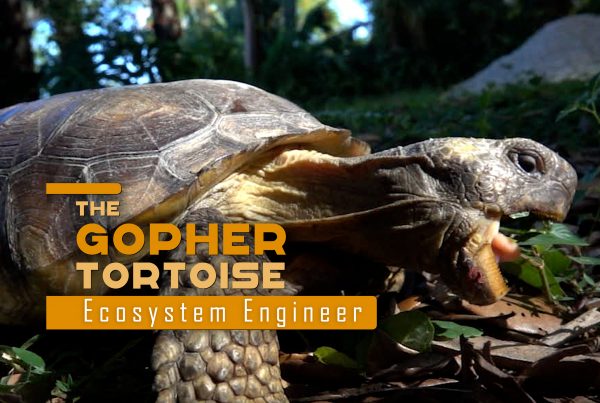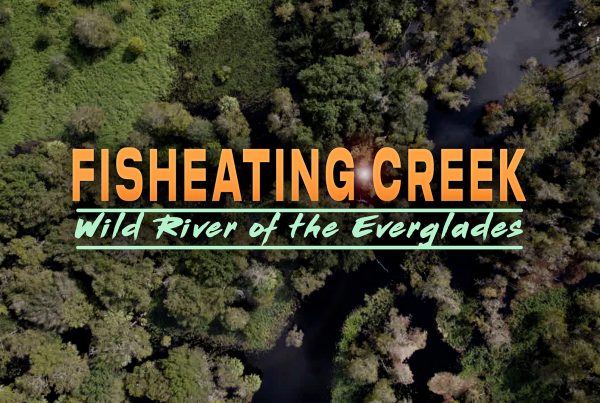There’s a reason why a food pyramid is shaped, well, like a pyramid, and a reason why food pyramids and food chains are divided into trophic levels. Watch the video, we’ll clue you in.
The Everglades, as we learned, is full of many different kinds of producers….sawgrass is another good example. Do a bit of research and see if you can find a primary consumer that eats sawgrass. Can you find a secondary consumer that eats that animal?
So now we understand that a lot of the food energy that an organism consumes is lost to the environment as heat energy, and a lot of the matter is pooped out as waste. That means only a small percentage of the matter and energy can pass on to the next level on the food chain. Predators at the top of the food chain need to eat lots and lots of smaller animals to get the energy and matter they need to survive. Do you think this means an ecosystem can usually support more top predators than primary, secondary or tertiary consumers?
Trophic Levels and the Food Pyramid
We’re back in the Everglades today, and man do I love this place. Sometimes I like to just wander through the different habitats and quietly observe the landscape, the amazing variety of plants and animals. The first thing you notice is that there are plants everywhere: Sawgrass, palmettoes, slash pines. Look closer and you’ll see herbivores. Some large, most small. If you’re lucky, you’ll watch a predator on the hunt. And on a good day, you’ll see a few alligators. In the Everglades, gators rule.
In an earlier video we put together a basic Everglades food chain, and we learned how matter and energy flow through an ecosystem. Out here it is immediately clear that plants dominate. These producers, the first link of any food chain, blanket the prairies, hammocks and pine rocklands. There is far more bio-mass in the plants than in all of the animals combined. But as you move up the food chain, you find fewer individuals, less biomass. That’s why it’s such a treat to see a top predator like an alligator or a Florida panther.
And that’s also why a food pyramid is a great way to illustrate the community of plants and animals in an ecosystem. First, you’ll see that a food pyramid is divided into levels. We call these “trophic levels.” A “trophic level” is a number that signifies the position an organism occupies on a food chain or in this case, a food pyramid. Level one is for the producers. Periphyton belongs here. Level two is the primary consumers, the herbivores. That’s where mosquito larvae belong. Level 3 is for the secondary consumers: small carnivores and omnivores like the mosquito fish. Level 4- the tertiary consumers: larger carnivores like the great blue heron. And capping it off is trophic level 5: the top predators like the American Alligator. This is the peak of the food pyramid which is why animals that occupy this level are also called “apex predators.”
Now I should just say that a lot of food pyramids only include 4 levels, lumping the tertiary consumers in with the top predators. That’s not wrong, just a way to simplify things a bit. In our case, we didn’t really want to put the alligators in with the great blue herons, because that’s just not fair for the alligators. And plus, we’re a bit extra that way.
So why a food pyramid and not a food column? Well it has to do with population numbers, biodiversity and overall biomass. Trophic level one, for example, includes not just one clump of periphyton, but all of the periphyton, as well as all of the sawgrass, all of the mangroves and every other green plant that grows in the Everglades.
This is how it works for each level, however as you move up the pyramid each level gets progressively smaller. Why, you ask? Well it has everything to do with the 10 percent rule we learned about in our food chain video. Let’s re-cap:
When an organism eats another organism, it uses up a lot of the food energy that is taken in, rather than passing it all up to the next link on the chain. Much of that energy is used in digestion and other metabolic processes as the organism grows, and passes out into the environment as heat energy.
At the same time, much of the matter is excreted as waste and is incorporated into the soil. In fact the rule of thumb is that only about 10 percent of the energy consumed by an organism passes on to the next level.
There you have it. Because so much matter and energy is lost as it moves up through each trophic level, I takes a lot more biomass on the bottom levels to support those at the top, hence the pyramid shape. So if you care about gators and panthers, you should also really care about sawgrass and periphyton. It takes a lot of space to grow a lot of plants to support just one top predator.
But we’re not done yet. We’re missing something important, something that is often overlooked and we’re actually a little unsure of where it belongs in our food pyramid. Most people put it above the top predators. I think we’ll make it the foundation because these organisms bring everything full-circle. Although they tend to be small, some even microscopic, they actually represent a pretty large amount of biomass and diversity in an ecosystem. They are the decomposers: The fungi, the bacteria, and detritivores like millipedes and earthworms. These are the organisms that break down organic waste and tissue, essentially turning dead stuff back into soil. This makes the plants happy, which makes the consumers and top predators happy, which makes me happy. Earth worms: they’re slimy, they live in the dirt and they eat rotting stuff. But in my opinion, these decomposers deserve a lot more love and attention.




